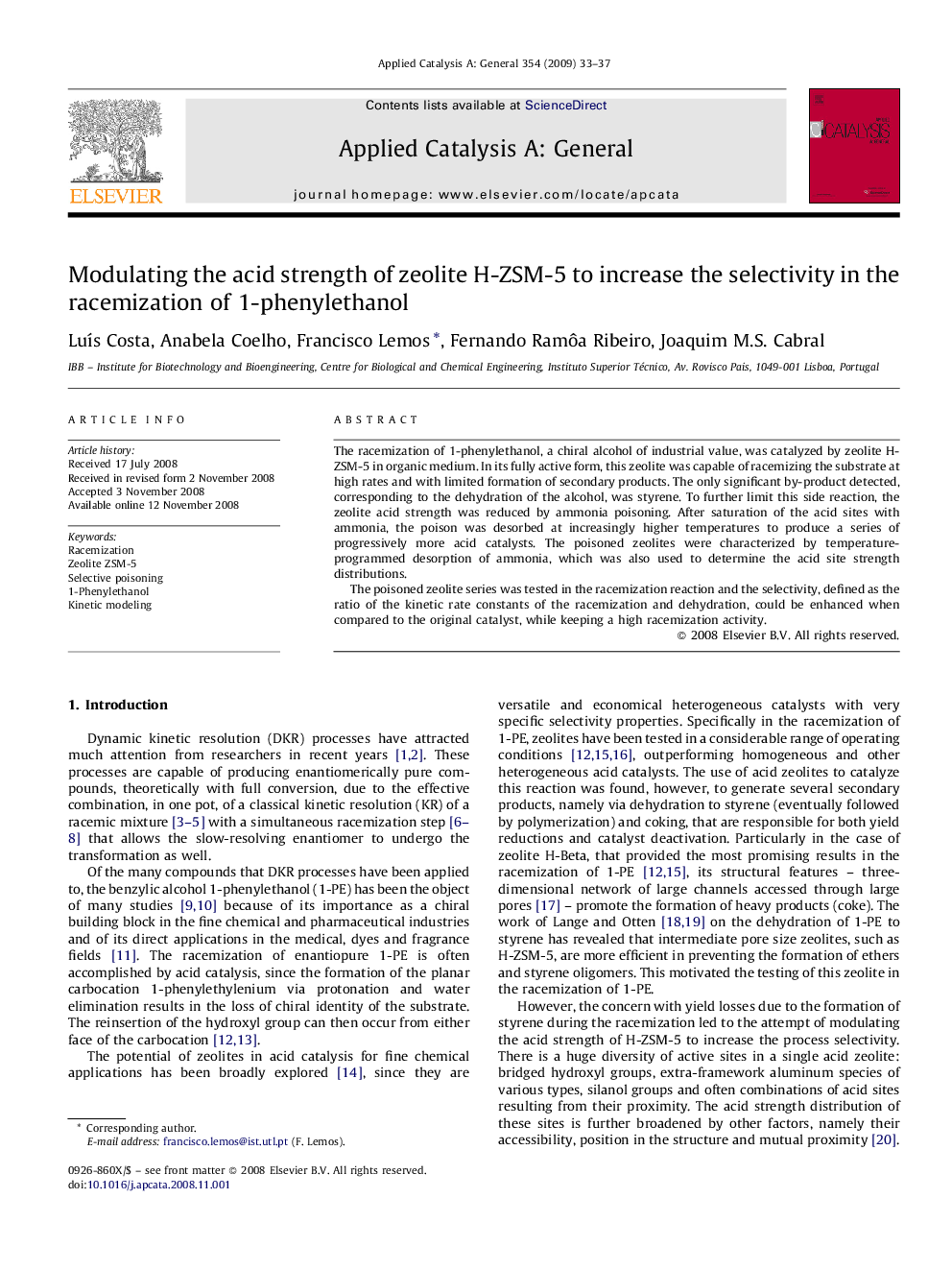| Article ID | Journal | Published Year | Pages | File Type |
|---|---|---|---|---|
| 42834 | Applied Catalysis A: General | 2009 | 5 Pages |
The racemization of 1-phenylethanol, a chiral alcohol of industrial value, was catalyzed by zeolite H-ZSM-5 in organic medium. In its fully active form, this zeolite was capable of racemizing the substrate at high rates and with limited formation of secondary products. The only significant by-product detected, corresponding to the dehydration of the alcohol, was styrene. To further limit this side reaction, the zeolite acid strength was reduced by ammonia poisoning. After saturation of the acid sites with ammonia, the poison was desorbed at increasingly higher temperatures to produce a series of progressively more acid catalysts. The poisoned zeolites were characterized by temperature-programmed desorption of ammonia, which was also used to determine the acid site strength distributions.The poisoned zeolite series was tested in the racemization reaction and the selectivity, defined as the ratio of the kinetic rate constants of the racemization and dehydration, could be enhanced when compared to the original catalyst, while keeping a high racemization activity.
Graphical abstractRacemization of 1-phenylethanol, a model substrate for dynamic kinetic resolution processes, was catalyzed by zeolite H-ZSM-5 in organic medium. The only significant by-product detected, corresponding to the dehydration of the alcohol, was styrene. Reaction selectivity, defined as the ratio of the kinetic rate constants of racemization and dehydration, was enhanced by selective poisoning of the zeolite with ammonia.Figure optionsDownload full-size imageDownload as PowerPoint slide
